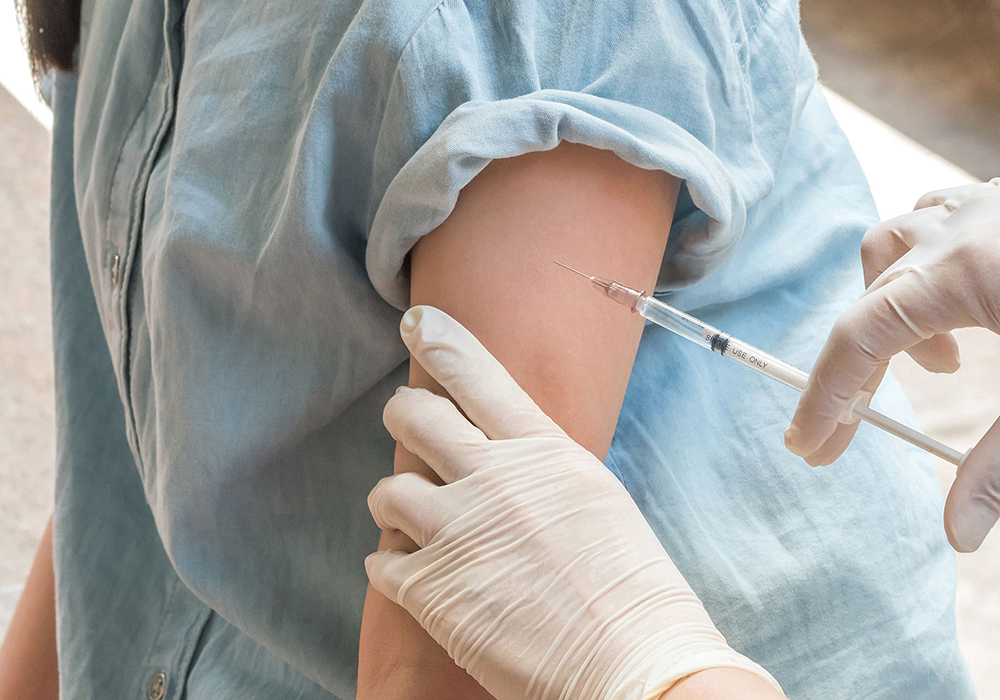Rapid advancements in the science of chimeric antigen receptor (CAR) T-cell therapies present unique challenges and opportunities related to patient care. Nurses are at the forefront of those advancements—contributing to practice guidelines, developing center-specific protocols, publishing outcomes and best practices, and researching the patient experience, outcomes, and supportive interventions.

Symptoms of immune-related adverse events (irAEs) with CAR T-cell therapy can present like other cancer-related side effects such as immunosuppression with chemotherapy or disease presentations. Although they may look similar, symptom assessment and management for irAEs are often very different, and early identification of the underlying pathology and implementation of timely, evidence-based care is imperative to supporting optimal patient outcomes.
CAR T-cell therapy side effects have been studied extensively, although we are still collecting evidence related to late and long-term effects. Early reviews identified cytokine release syndrome (CRS), which occurs when inflammatory cytokine are released in large volumes as a result of immune cell activation and can result in flu-like symptoms and more severe complications, including capillary leak, hypoxia, and end organ damage; and immune effector cell–associated neurotoxicity syndrome (ICANS), which presents as neurologic symptoms, including lethargy, expressive aphasia, word-finding difficulties, and progressive impaired motor skills, dizziness, delirium, and seizure activity. Toxicities associated with CAR T-cell therapies are grouped into several categories, including a unique class of side effects described as on-target, off-tumor effects that result from CAR T cells’ attack on both malignant and healthy cells.
I collaborated with a team of clinicians and patients that combined research- and practice-based evidence to make recommendations for the management of unique irAEs that may occur in patients receiving CAR T-cell therapy. The team included three other oncology nurses: Sherry Adkins, RN, MSN, CNS, ANP-BC, from the University of Texas MD Anderson Cancer Center in Houston; ONS member Marianne Davies, MSN, APRN, ACNP, DNP, AOCNP®, from Smilow Cancer Hospital and Yale School of Nursing in New Haven, CT; and Jung-Min Song, ACNS-BC, RN, from Cleveland Clinic in Ohio.
We conducted a systematic review of 35 publications to provide the foundation for the guidelines, which are organized by the most commonly observed irAEs: CRS, ICANS, B-cell aplasia, cytopenias, and infections. The guidelines contain supportive care recommendations for low-grade irAEs and include interventions such as IV hydration, antipyretics, and organ-specific symptom support. Treatment recommendations for higher-grade irAEs include IV immunoglobulin infusions for grade 2 or higher B-cell aplasia, steroids for grade 2 or higher ICANS, and tocilizumab for grade 2 or higher CRS and ICANS and grade 1 ICANS in the presence of concurrent CRS. The treatment recommendations are summarized in tables throughout the guidelines for ease of reference.
I am also collaborating on two CAR T-cell protocols, both focused on the collection of patient-reported outcomes up to six months following CAR T-cell therapy, at the Ohio State University James Comprehensive Cancer Center and at the University of Texas MD Anderson Cancer Center.
The future of CAR T-cell therapy is focused on three areas: refining existing therapies to become more efficient and effective with reduced toxicity, expanding indications for new and existing products, and exploring the therapy beyond oncology. The CAR T-cell therapy journey is full of new investigational products and indications, and as treatments evolve, we must explore their application across diverse communities and patient populations. The excitement of new and promising therapies must be balanced with a commitment to ensure that the outstanding outcomes in early clinical trials are available for all individuals.






